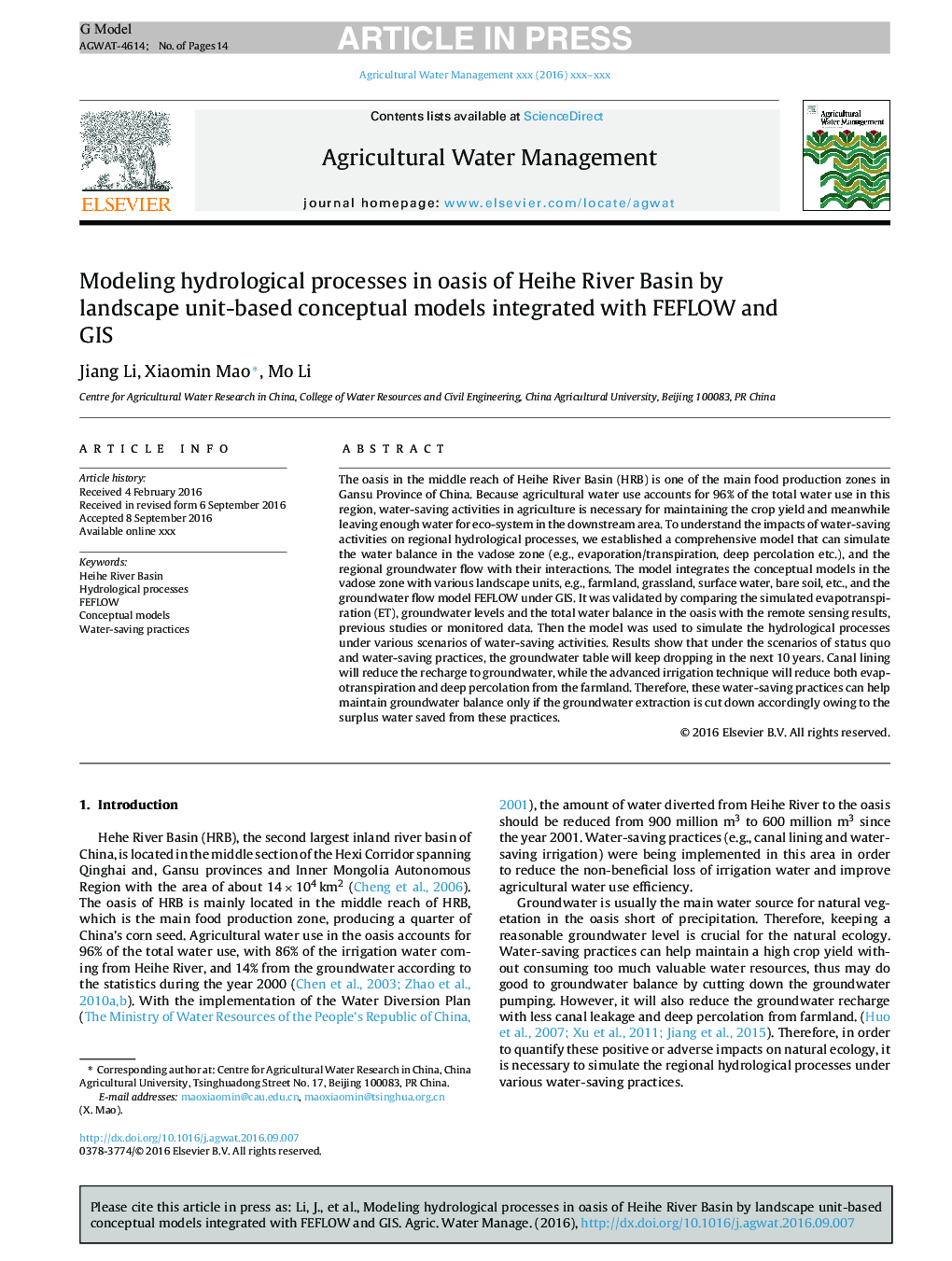| Article ID | Journal | Published Year | Pages | File Type |
|---|---|---|---|---|
| 5758619 | Agricultural Water Management | 2017 | 14 Pages |
Abstract
The oasis in the middle reach of Heihe River Basin (HRB) is one of the main food production zones in Gansu Province of China. Because agricultural water use accounts for 96% of the total water use in this region, water-saving activities in agriculture is necessary for maintaining the crop yield and meanwhile leaving enough water for eco-system in the downstream area. To understand the impacts of water-saving activities on regional hydrological processes, we established a comprehensive model that can simulate the water balance in the vadose zone (e.g., evaporation/transpiration, deep percolation etc.), and the regional groundwater flow with their interactions. The model integrates the conceptual models in the vadose zone with various landscape units, e.g., farmland, grassland, surface water, bare soil, etc., and the groundwater flow model FEFLOW under GIS. It was validated by comparing the simulated evapotranspiration (ET), groundwater levels and the total water balance in the oasis with the remote sensing results, previous studies or monitored data. Then the model was used to simulate the hydrological processes under various scenarios of water-saving activities. Results show that under the scenarios of status quo and water-saving practices, the groundwater table will keep dropping in the next 10 years. Canal lining will reduce the recharge to groundwater, while the advanced irrigation technique will reduce both evapotranspiration and deep percolation from the farmland. Therefore, these water-saving practices can help maintain groundwater balance only if the groundwater extraction is cut down accordingly owing to the surplus water saved from these practices.
Related Topics
Life Sciences
Agricultural and Biological Sciences
Agronomy and Crop Science
Authors
Jiang Li, Xiaomin Mao, Mo Li,
